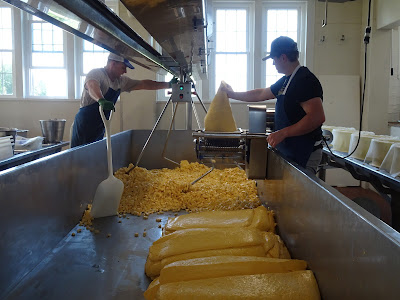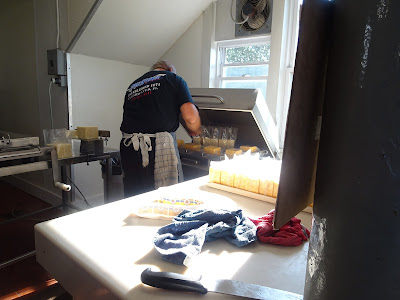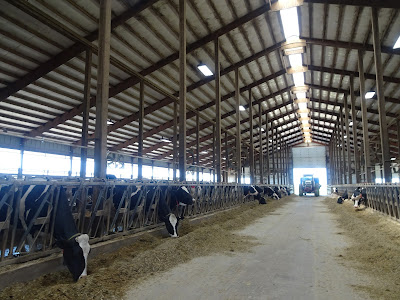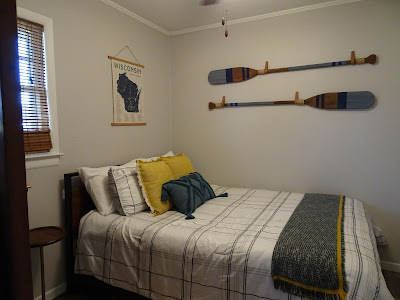June 7, 2023 (Wednesday)
Today was moving day so we packed up early and headed south. We wanted to return to the main Visitor Center area of the George W. Mead State Wildlife Area, as we'd arrived pretty late during our first visit.
We made good time and arrived before they even had the main gate open, but we'd learned that they had a satellite parking lot outside of the gate with a pedestrian entrance onto their trail system.
The trail passed first through a forested area and then went around a series of ponds and marshy areas.
Common Yellowthroat
Dickcissel
There was a viewing blind at the end of a boardwalk spur, and as we approached we were greeted by a Northern Flicker on the blind itself. We had a nice view of the large pond and meadows as we circled the pond and looked back toward the Visitor Center.
There were Trumpeter Swans nesting in the various ponds, and we saw one with two babies, called cygnets.
After a pleasant few hours at the Wildlife Area we got back into our car and heading for the next factory tour on Teri's list. Knigge Farm, located in Omro, Wisconsin was the first dairy farm in North America to install a robotic milking system.
We'd called ahead, and were met by Pete, the owner of the farm. He was very friendly and enthusiastic about showing us the operation. The main barn was a long building, divided lengthwise by a wide concrete corridor. Half of the cattle were on each side, and their feed was dropped along the edge of the corridor. Pete explained that the feed is "silage", which is the entire corn plant, chopped up and sealed under plastic sheathing while still green and moist. It ferments in place and retains a higher level of nutrients than a similar dry hay.
As the cattle fed it was obvious that some of the silage was pushed out too far for them to reach. I asked Pete if they had to shovel it back toward the cattle now and then, but he pointed to what looked like a giant Roomba vacuum cleaner that he said made a pass down each side every couple of hours and swept the food back to the edge where the cattle could reach it. Not too much manual labor here. Smart!
Once we'd seen the main part of the barn, Pete took us to the robotic milking booth on one side of the barn. There is a booth on each side.
Here's where it got really interesting. Each cow wears a collar with a transponder identifying her. Not only that but it monitors a number of things like body temperature, abdominal sounds, amount of movement, etc. that allows the farmer to know generally if they are healthy, when they are ready to breed, and some other things.
When a cow feels that she is ready to milk, she walks herself into the stall where her collar is read. Sometimes there is a line of cows waiting.
When the collar is read the computer does several things. First it checks that the cow hasn't come back too quickly since its last milking. The cows receive sweet feed while they are being milked, so some will try to come back over and over just to get the treat. In that case the computer simply opens the front gate and off they go with no treat!
If the cow is ready to be milked, the computer projects how much milk that cow should give based on past performance and time since their last milking. With the cow in position (and receiving their treat) the robot first washes the udder. This is done with a combination of warm water and soft brushes which go over the udder in two separate cycles with the brushes rinsed in between.
Once things are all clean a laser guided apparatus locates each teat and attaches a suction device to it. The cattle are bred to be uniform in size and build, and with "high udders" which helps to keep them clean and facilitates the robot making the attachment.

With the machine attached the robot measure the amount of milk coming from each quarter of the udder. It is even capable of remembering if a cow has a damaged or non-functioning teat, and doesn't attach the machine in that quadrant. Likewise it can sense if there is an infection and not only doesn't attach, but passes the information on to the farmer.
50.8 pounds of milk and still going!!
The real-time display shows the identity of the cow, how long she has been in the booth, how much sweet feed she has received, projected amount of milk, total amount of milk given, etc. As each quadrant dries up the suction attachment drops off, until all four quadrants are finished. The final step is to spray the udder with disinfectant and open the gate to send the cow on her way.
This is a 24 hour a day operation, with the cows typically entering the milking booth three times each day. Outside of the booth is a back-scratching brush that the cows can walk under that is also used to apply fly repellant if necessary.
Once we'd seen a couple of cows complete the milking operation, we then headed over to the calf barn where things are also pretty automated. The youngest calves are fed colostrum, which the milking booth diverts to the special container knowing that the cow being milked has just given birth. The older calves are fed a special formula that is dispensed based on the ID of the calf (yes, they already have their collars), and how long it's been since they last ate. We got to see a calf stick its head into the feeder, only to be denied food because it had just been there! Sneaky...

One thing we learned it that the calves will suck your finger if you let them. I got a slobber finger just to test it out!
Slobber Finger
Pete also told us that they don't keep any bulls, and all breeding is done by artificial insemination. They keep a liquid nitrogen filled flask on the property with the bull semen, and a vet tech comes by daily to check on cows and breed the ones that are ready.
Liquid Nitrogen Flask
While the barn and milking operations themselves are pretty compact, dairy farms take up most of the land in this area. This is because of the large amounts of feed that have to be grown to support the dairy farms. We drove past miles and miles of this.
After the fascinating tour we bid Pete farewell and headed to Randolph, Wisconsin where the Sunrise Cottage on Beaver Dam Lake awaited.
This property was owned by a couple with several AirBnb properties, and was more professionally presented than the first. They had a welcome notebook with lots of information about the surrounding area, the cottage itself, and other properties that they owned. We had some time in the evening to sit near the lake and read, which was very pleasant.
Next - Making some fresh cheese and Mosquito Hill



























































